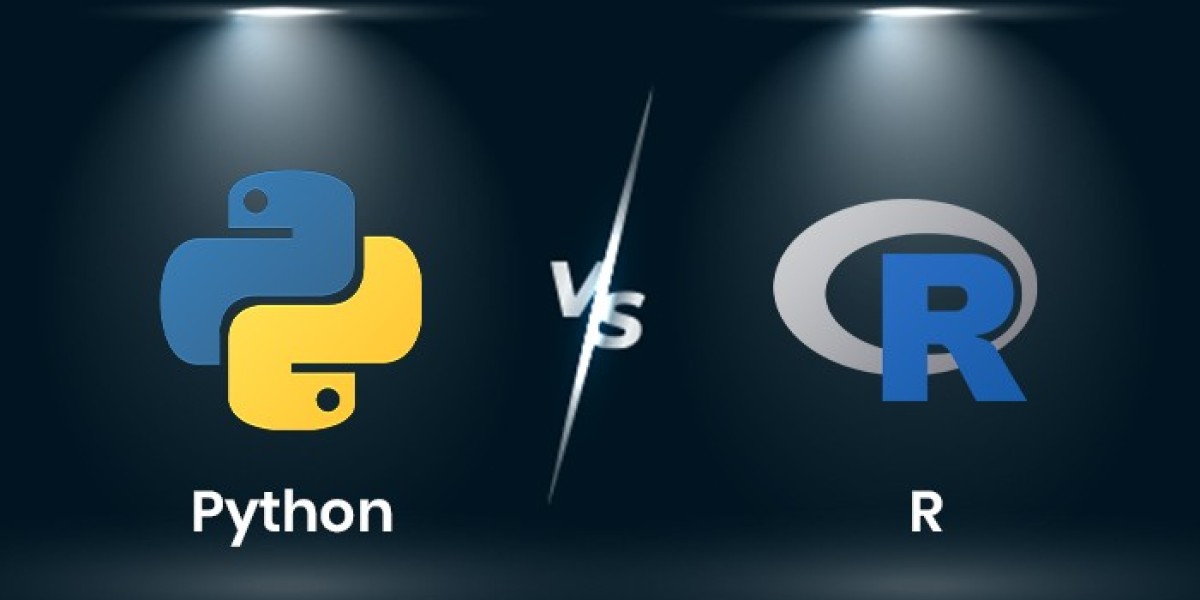In the rapidly evolving world of software development, choosing the right tools and languages can make a significant difference in the success of a project. At Bluetris Technologies, a leading software development company, we understand the importance of selecting the most suitable programming language to meet our clients' diverse needs. Among the myriad of languages available, Python and R stand out as two of the most prominent options for data science and analytics. This comprehensive guide delves into an impartial comparison between Python and R, examining their features, advantages, disadvantages, and best use cases. Whether you're a seasoned developer or just starting out, this guide will help you make an informed decision, ensuring your projects benefit from the right technology tailored to your specific requirements.
Overview of Python and R
What is Python?
Python is a high-level, interpreted programming language known for its readability and versatility. Created by Guido van Rossum and first released in 1991, Python has grown to become one of the most popular languages in various fields including web development, data science, artificial intelligence, scientific computing, and more. Its extensive standard library and supportive community make it a favorite among developers and data scientists alike.
What is R?
R is a programming language and free software environment primarily used for statistical computing and graphics. Developed by Ross Ihaka and Robert Gentleman in the early 1990s, R has a strong foothold in academia and research. It excels in statistical analysis, data visualization, and bioinformatics. R's vast array of packages and tools tailored for data analysis make it a go-to language for statisticians and data scientists.
Key Features and Syntax
Python Features and Syntax
Readability and Simplicity: Python's clean and straightforward syntax promotes readability and ease of learning.
Dynamic Typing: Python does not require explicit declaration of variable types.
Extensive Standard Library: Python's standard library supports a wide range of applications.
Interpreted Language: Python code is executed line by line, facilitating easier debugging.
Cross-Platform Compatibility: Python runs on various operating systems including Windows, macOS, and Linux.
R Features and Syntax
Statistical Computing: R is designed for statistical analysis and provides a wealth of statistical techniques.
Data Visualization: R excels in creating high-quality graphs and charts with packages like ggplot2.
Comprehensive Package Ecosystem: CRAN (Comprehensive R Archive Network) hosts thousands of packages for various data analysis tasks.
Interpreted Language: R scripts are executed directly, which is useful for interactive data analysis.
Cross-Platform Compatibility: R runs on Windows, macOS, and Linux.
Use Cases
Python Use Cases
Web Development: Frameworks like Django and Flask make Python a powerful tool for building web applications.
Data Science and Machine Learning: Libraries such as Pandas, NumPy, and Scikit-learn, along with frameworks like TensorFlow and PyTorch, make Python ideal for data analysis and AI projects.
Automation and Scripting: Python's simplicity and versatility make it suitable for automation tasks.
Scientific Computing: Python is widely used in scientific research for simulations and computational tasks.
Game Development: Libraries like Pygame allow developers to create games using Python.
R Use Cases
Statistical Analysis: R's core strength lies in statistical modeling and analysis.
Data Visualization: Packages like ggplot2 and lattice provide advanced data visualization capabilities.
Bioinformatics: R is heavily used in bioinformatics for analyzing biological data.
Research and Academia: R is a popular choice in academia for teaching and conducting research in statistics and data analysis.
Data Mining: R's packages such as caret and tm facilitate efficient data mining processes.
Advantages and Disadvantages
Python Advantages
- Ease of Learning: Python's simple and readable syntax makes it accessible to beginners.
- Versatility: Python's wide range of libraries and frameworks allows it to be used in various domains.
- Strong Community Support: A large and active community ensures abundant resources for learning and troubleshooting.
- Cross-Platform: Python runs seamlessly on multiple operating systems.
- Integration: Python integrates well with other languages and tools, making it suitable for building complex applications.
Python Disadvantages
- Performance: Python is slower compared to compiled languages like C++ and Java.
- Mobile Development: Python is not the best choice for mobile app development.
- Runtime Errors: Dynamic typing can lead to runtime errors if not properly handled.
R Advantages
- Statistical Computing: R is designed specifically for statistics, making it highly effective for statistical analysis.
- Data Visualization: R's graphical capabilities are top-notch, allowing for detailed and customizable visualizations.
- Package Ecosystem: CRAN offers a vast array of packages for various data analysis tasks.
- Interactive Environment: R's interactive nature makes it ideal for exploratory data analysis.
- Community Support: R has a dedicated community, especially in the fields of statistics and bioinformatics.
R Disadvantages
- Learning Curve: R's syntax and functional programming paradigm can be challenging for beginners.
- Performance: R can be slower than other languages for certain tasks, particularly with large datasets.
- Integration: R's integration capabilities are not as extensive as Python's.
- General Purpose: R is less versatile for general-purpose programming compared to Python.
Community and Ecosystem
Python Community and Ecosystem
- Community: Python has a large, active, and diverse community with numerous forums, user groups, and conferences.
- Libraries and Frameworks: Python's ecosystem includes libraries and frameworks like Django, Flask, Pandas, NumPy, Scikit-learn, TensorFlow, and more.
- Documentation and Resources: Python boasts extensive documentation and a plethora of online tutorials and courses.
- Open Source: Python is open source, with many projects and libraries available for free use and contribution.
R Community and Ecosystem
- Community: R has a strong and dedicated community, especially in academia and research.
- Libraries and Frameworks: CRAN hosts thousands of packages tailored for statistical analysis and data visualization.
- Documentation and Resources: R has comprehensive documentation and a wide range of tutorials, particularly focused on statistics and data analysis.
- Open Source: R is open source, with many contributions from the academic and research community.
Learning Curve
Learning Python
- Beginner-Friendly: Python is often recommended as a first programming language due to its readability and straightforward syntax.
- Educational Resources: Numerous books, online courses, and tutorials are available for learning Python.
- Practical Applications: Python's versatility allows learners to apply their skills to various projects, from web development to data science.
Learning R
- Statistical Focus: R's syntax and functionality are geared towards statistical analysis, which can be challenging for those without a statistical background.
- Educational Resources: There are many resources available for learning R, particularly in the context of statistics and data analysis.
- Practical Applications: R is highly applicable in fields that require statistical computing and data visualization, such as research and bioinformatics.
Job Market and Career Opportunities
Python Job Market
- High Demand: Python developers are in high demand across various industries, including web development, data science, AI, and finance.
- Diverse Opportunities: Python's versatility opens up career opportunities in web development, data analysis, machine learning, automation, and more.
- Competitive Salaries: Python developers typically command competitive salaries due to their skills and the language's popularity.
R Job Market
- Specialized Demand: R is highly sought after in academia, research, and industries that rely on statistical analysis.
- Focused Opportunities: Career opportunities for R developers are often concentrated in data analysis, research, bioinformatics, and statistics.
- Competitive Salaries: R professionals, particularly those with expertise in statistics and data analysis, can earn competitive salaries.
Python vs R for Data Analysis
Data Manipulation
- Python: Libraries like Pandas provide powerful tools for data manipulation and analysis, making Python highly efficient for handling large datasets.
- R: R's data manipulation capabilities are robust, with packages like dplyr and data.table offering extensive functionality for transforming and cleaning data.
Statistical Analysis
- Python: While Python has libraries like SciPy and Statsmodels for statistical analysis, it is not as specialized as R.
- R: R excels in statistical computing, offering a comprehensive suite of statistical techniques and models.
Data Visualization
- Python: Libraries like Matplotlib, Seaborn, and Plotly enable effective data visualization in Python.
- R: R is renowned for its data visualization capabilities, with ggplot2 and lattice providing advanced and customizable visualizations.
Machine Learning
- Python: Python is a dominant language in machine learning, with powerful libraries like Scikit-learn, TensorFlow, and PyTorch.
- R: R also supports machine learning through packages like caret and randomForest, though its ecosystem is not as extensive as Python's.
Python vs R for Specific Domains
Bioinformatics
- Python: BioPython and other libraries support bioinformatics tasks, but Python is not the primary language in this field.
- R: R is extensively used in bioinformatics, with packages like Bioconductor providing tools for biological data analysis.
Finance
- Python: Python is widely used in finance for quantitative analysis, algorithmic trading, and financial modeling.
- R: R is also utilized in finance, particularly for statistical analysis and modeling.
Academia and Research
- Python: Python's readability and versatility make it popular in academia, particularly for teaching programming and data science.
- R: R has a strong presence in academic research, especially in fields that require statistical analysis.
Web Development
- Python: Frameworks like Django and Flask make Python a strong contender for web development.
- R: R is not typically used for web development, though it can be integrated with web applications for data visualization.
Conclusion
The choice between Python and R depends on your specific needs and the nature of your projects. Python's versatility, readability, and strong presence in web development, data science, and machine learning make it a great choice for a wide range of applications. On the other hand, R's specialization in statistical analysis and data visualization, along with its strong presence in academia and research, makes it ideal for data-driven fields.
At Bluetris Technologies, a leading software development company, we leverage both Python and R to deliver customized solutions tailored to our clients' needs. Whether you're working on web development, data analysis, or machine learning, understanding the strengths and limitations of Python and R will help you make an informed decision and drive your project's success.






